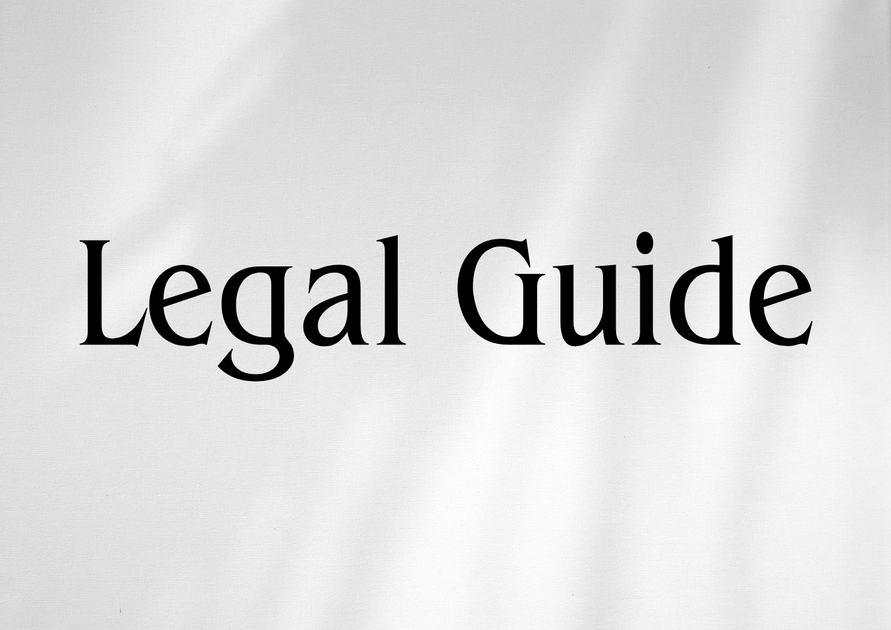Introduction
Establishing a business in the Dubai International Financial Centre (DIFC) represents a strategic move for both multinational corporations and local entrepreneurs seeking to leverage the UAE’s robust economic landscape. The DIFC, governed by an independent regulatory framework and court system, provides unique advantages, notably for financial and professional services firms. Recent legislative updates, such as DIFC Law No. 5 of 2024 on Companies and pivotal regulatory guidance from the Dubai Financial Services Authority (DFSA), have refined incorporation procedures, registration timelines, and compliance obligations. These developments are not merely administrative; they signify critical transitional steps impacting legal certainty, operational readiness, and risk mitigation for entities seeking to register in the centre. This article offers a detailed, consultancy-grade analysis of the end-to-end DIFC company registration timeline—from submitting an application to obtaining a commercial license. Readers will gain actionable legal insights, regulatory context, practical comparisons, and case-based guidance crucial for business leaders, HR professionals, compliance officers, and legal practitioners navigating the DIFC ecosystem.
Table of Contents
- Regulatory Overview: DIFC Company Law and Regulatory Updates
- Pre-Registration Planning: Strategic Considerations Before Submission
- Stepwise Timeline: Application to License Milestones
- Key Legal Requirements: Documentation, Approvals, and Governance
- Procedural Analysis: Application Processing, Due Diligence, and DFSA Interactions
- Compliance Comparisons: Old vs. New DIFC Incorporation Rules
- Practical Case Study: Hypothetical DIFC Registration for an Asset Management Firm
- Risk Assessment: Non-Compliance, Delays, and Mitigation Strategies
- Compliance Checklist: Essential Steps for Seamless DIFC Registration
- Conclusion and Professional Recommendations
Regulatory Overview: DIFC Company Law and Regulatory Updates
Legal Framework Governing DIFC Company Incorporation
The primary legal framework for company incorporation in the DIFC is anchored in DIFC Law No. 5 of 2024 (Companies Law), supplemented by various DFSA rulebooks and guidance notes. This legal architecture provides a distinct regulatory regime, separate from onshore UAE Federal Law No. 2 of 2015 (Commercial Companies Law), ensuring clarity and predictability for entities operating within its jurisdiction.
Key Recent Updates Impacting Registration
- DIFC Law No. 5 of 2024: Introduced enhanced requirements for Ultimate Beneficial Ownership (UBO) disclosures, stricter directorship criteria, and new standards for digital registrations.
- DFSA General Module (GEN) Updates: Mandated higher transparency standards and enhanced document verification procedures.
- Integration with UAE Economic Substance Regulations (Cabinet of Ministers Resolution No. 57 of 2020): Required DIFC entities to demonstrate adequate economic substance within the centre.
These updated laws reflect Dubai’s broader initiatives to align with international best practices and to bolster investor confidence.
Pre-Registration Planning: Strategic Considerations Before Submission
Feasibility and Due Diligence
Prior to initiating an application, organizations must conduct a thorough feasibility analysis, assessing legal, tax, and operational impacts of a DIFC entity. Key strategic questions include:
- Does the intended business activity fall within DFSA-regulated or non-regulated categories?
- What is the optimal company type (e.g., Private Company Limited by Shares, Branch, Foundation) under DIFC Law No. 5 of 2024?
- Are there specific sectoral approvals required (e.g., for financial services, asset management, fintech, or family office structures)?
- What are the physical presence requirements (office space, staff, local management), in light of the updated Economic Substance Regulations?
Stakeholder and Board Composition Planning
Early-stage planning should determine director and shareholder structures, considering:
- Minimum directorship and residency obligations per DIFC Law No. 5 of 2024
- Disclosure requirements for UBOs in compliance with Cabinet Resolution No. 58 of 2020
- Data protection considerations as governed by DIFC Data Protection Law No. 5 of 2020
Stepwise Timeline: Application to License Milestones
Structured Overview of the Registration Lifecycle
The company registration process in the DIFC typically unfolds as follows:
| Stage | Key Actions | Responsible Parties | Average Timeline |
|---|---|---|---|
| Pre-Application | Consultation, feasibility study, structuring | Client, Legal Consultants | 1-2 weeks |
| Application Submission | Online application, KYC, documentation | Applicant, Authorized Consultant | 1-2 days |
| Regulatory Review | Due diligence, DFSA engagement, clarification requests | DIFC Registrar, DFSA | 3-6 weeks* |
| Conditional Approvals | Additional document submission, on-site meetings | Applicant, Authorities | 1-2 weeks |
| License Issuance | Payment, certificate collection, post-approval filings | Applicant, DIFC Registrar | 2-4 days |
*DFSA-regulated entities typically face extended review timelines due to the complexity of financial services licensing.
Suggested Visual: Timeline Process Flow Diagram
Recommendation: Place a detailed process flow diagram here illustrating the journey from inception to license delivery, highlighting checkpoints and estimated durations for each step.
Key Legal Requirements: Documentation, Approvals, and Governance
Core Document Set for DIFC Company Registration
- Application Form: Must be completed via DIFC’s Client Portal.
- Constitutional Documents: Memorandum and Articles of Association, compliant with DIFC Law No. 5 of 2024.
- KYC and UBO Declarations: Including notarised passport copies, UAE entry stamps, and recent utility bills.
- Director and Secretary Consents: Written confirmations of appointment and personal information forms.
- Leased Office Space Documentation: Commercial lease or evidence of virtual office (if applicable).
- DFSA Approvals (for regulated activities): Business plans, regulatory questionnaires, risk assessment matrices.
Sector-Specific Approvals
DIFC mandates additional clearances for:
- Financial services (asset management, insurance, fintech)
- Family offices and foundations
- Cryptoassets and virtual assets (following DFSA Crypto Token Regime updates, 2024)
Governance and Post-Incorporation Filings
- Board Resolutions appointing signatories and opening bank accounts
- Registration of data controllers with DIFC Data Protection Authority
- Filing of economic substance notifications within 6 months (Cabinet Resolution No. 57 of 2020)
Procedural Analysis: Application Processing, Due Diligence, and DFSA Interactions
Detailed Breakdown: Regulatory Review
Upon application submission, the DIFC Registrar conducts a multi-stage due diligence process, which includes:
- Document Authentication: Validation of all personal and corporate documents, including foreign-registered documents with required legalisation and certification.
- KYC and AML Checks: In accordance with UAE Federal Decree Law No. 20 of 2018 (Anti-Money Laundering), intensified for companies with cross-border stakeholders.
- UBO Verification and Disclosure: Close scrutiny to ensure alignment with Cabinet Resolution No. 58 of 2020.
- DFSA Engagement (for Regulated Firms): Comprehensive business plan review, financial model analysis, and fit-and-proper assessments of key persons.
Practical Insights on Regulatory Interactions
- Regulatory authorities may seek clarifications and supplemental evidence, often leading to back-and-forth queries. Adequate legal representation expedites resolution.
- For regulated activities, a pre-application meeting with the DFSA can shorten approval times and preempt potential red flags.
Compliance Comparisons: Old vs. New DIFC Incorporation Rules
Evolution of DIFC Company Law Requirements
Recent updates to DIFC Law No. 5 of 2024 have brought significant changes in registration, governance, and compliance. The table below highlights key contrasts:
| Requirement | Pre-2024 Law | 2024 Updates (DIFC Law No. 5 of 2024) |
|---|---|---|
| Shareholder Disclosure | Basic identification required | Full UBO structure, regular declarations mandated |
| Directorship | Flexible criteria | Enhanced fit-and-proper requirements, residency minimums for certain entities |
| Digital Registration | Limited online filing | Mandatory portal-based digital filings and e-signatures |
| Economic Substance | Light obligations | Full economic substance reporting and annual notification (Cabinet Resolution No. 57 of 2020) |
| AML/KYC | Standard checks | Harmonised with Federal Decree Law No. 20 of 2018; escalated scrutiny for high-risk structures |
Practical Case Study: Hypothetical DIFC Registration for an Asset Management Firm
Scenario Background
A Swiss-based asset management group seeks to establish a DIFC entity to tap Middle Eastern investment markets, offering discretionary portfolio management and advisory services.
Analysis
- Phase 1 – Pre-Application: The firm conducts a thorough regulatory gap analysis, mapping Swiss compliance standards to DFSA guidelines, consulting with legal advisers to define optimal company structure (Private Company Limited by Shares) and board composition (ensuring at least one UAE-resident director).
- Phase 2 – Document Preparation: Bespoke Articles of Association are drafted to account for DIFC Law No. 5 of 2024; all directors’ passports and UBO forms are notarised and legalised.
- Phase 3 – Regulatory Review: The application triggers additional questions from DIFC and DFSA, including requests for detailed risk assessments and a demonstration of sufficient substance within the DIFC (office lease, key employees with UAE residence permits).
- Phase 4 – Approval and Post-Incorporation: Upon approval, the DIFC license is issued within 6 weeks from submission. The firm must register with the DIFC Data Protection Authority and file its Economic Substance Notification.
Key Lessons
Proactive legal preparation and regular engagement with DIFC regulators significantly reduce approval timelines. Missteps in document completeness or UBO declaration often result in extended delays.
Risk Assessment: Non-Compliance, Delays, and Mitigation Strategies
Risks of Non-Compliance
- Administrative Fines: Substantial penalties imposed for incorrect or late filings, per DFSA Enforcement Notices and Cabinet Resolution No. 58 of 2020.
- Delay Penalties: Repeated documentation errors result in “stop action” directives, stalling business launch and threatening client or counterparty relationships.
- Licensing Revocation: Serious breaches, especially involving AML failures, can lead to license suspension or permanent revocation by the DFSA.
Recommended Compliance Strategies
- Engage specialist legal consultants from initial planning to mitigate compliance gaps and address unique sectoral requirements.
- Maintain updated registries of UBOs and directors in line with the latest regulatory requirements.
- Utilize secure technology for digital filings and internal KYC/AML checks.
- Prioritize routine compliance training and audit readiness for board members and senior management.
Suggested Visual: Penalty Comparison Chart
Recommendation: Insert a side-by-side penalty chart here, benchmarking administrative fines under pre-2024 and post-2024 DIFC requirements.
Compliance Checklist: Essential Steps for Seamless DIFC Registration
| Step | Action | Timeline |
|---|---|---|
| 1 | Define legal structure & assess licensing needs | 1-3 days |
| 2 | Engage qualified legal consultancy | 1 week |
| 3 | Prepare constitutional documents | 1-2 weeks |
| 4 | Secure all supporting documents (UBO, KYC, leases, business plans) | 1 week |
| 5 | Complete application and attend to regulator queries promptly | 3-6 weeks (conditional on regulator) |
| 6 | Receive commercial license and file post-incorporation notifications | 2-4 days |
Conclusion and Professional Recommendations
The process of registering a company in the DIFC—from the initial application to the issuance of a commercial license—has evolved in complexity and sophistication in direct response to updated legislative, regulatory, and governance standards. Key changes introduced by DIFC Law No. 5 of 2024, regulatory guidance by the DFSA, and aligned federal legislation have increased the emphasis on transparency, due diligence, and real economic substance. These changes offer a more robust legal environment but require deliberate, well-advised action by business leaders.
In the coming years, the DIFC will continue its trajectory of regulatory maturity—mirroring international compliance standards and driving innovation in digital registrations and sectoral governance. Organizations considering DIFC incorporation must adapt by engaging professional legal advisors, maintaining rigorous compliance frameworks, and adopting proactive risk management. Timely and comprehensive adherence to all registration stages enhances not just legal compliance but also investor and stakeholder confidence in the UAE’s premier financial free zone.
Professional Best Practices:
- Begin with a tailored legal feasibility review aligned to business objectives and sector-specific obligations.
- Continually monitor updates from the DIFC, DFSA, and UAE federal authorities, leveraging expert legal consultants for ongoing compliance assurance.
- Foster a compliance-first culture at the board and operational levels to sustain long-term business resilience in the DIFC and wider UAE landscape.




